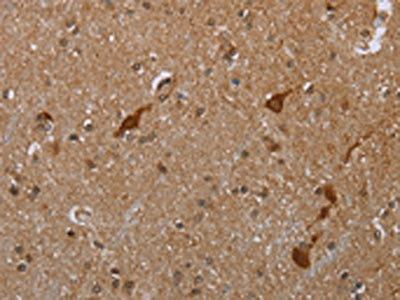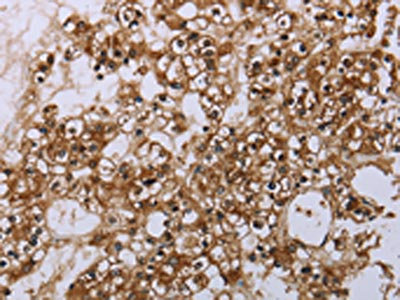Alternative Names
AA387232 antibody; C8AP2_HUMAN antibody; CASP 8 associated protein 2 antibody; CASP8 associated protein 2 antibody; CASP8-associated protein 2 antibody; CASP8AP2 antibody; Caspase 8 associated protein 2 antibody; CED 4 antibody; CED4 antibody; D4Ertd659e antibody; FLASH homolog antibody; FLASH homolog RIP 25 antibody; FLASH homolog RIP25 antibody; FLICE associated huge antibody; FLICE associated huge protein antibody; FLICE-associated huge protein antibody; FLJ11208 antibody; KIAA1315 antibody; mKIAA1315 antibody; OTTMUSP00000005125 antibody; RIP 25 antibody; RIP25 antibody; RP23-69G24.1 antibody
Species Reactivity
Human,Mouse
Immunogen
Synthetic peptide of Human CASP8AP2
Immunogen Species
Homo sapiens (Human)
Purification Method
Antigen affinity purification
Concentration
It differs from different batches. Please contact us to confirm it.
Buffer
-20°C, pH7.4 PBS, 0.05% NaN3, 40% Glycerol
Tested Applications
ELISA,WB,IHC
Recommended Dilution
| Application |
Recommended Dilution |
| ELISA |
1:1000-1:2000 |
| WB |
1:200-1:1000 |
| IHC |
1:25-1:100 |
Storage
Upon receipt, store at -20°C or -80°C. Avoid repeated freeze.
Lead Time
Basically, we can dispatch the products out in 1-3 working days after receiving your orders. Delivery time maybe differs from different purchasing way or location, please kindly consult your local distributors for specific delivery time.
Usage
For Research Use Only. Not for use in diagnostic or therapeutic procedures.






